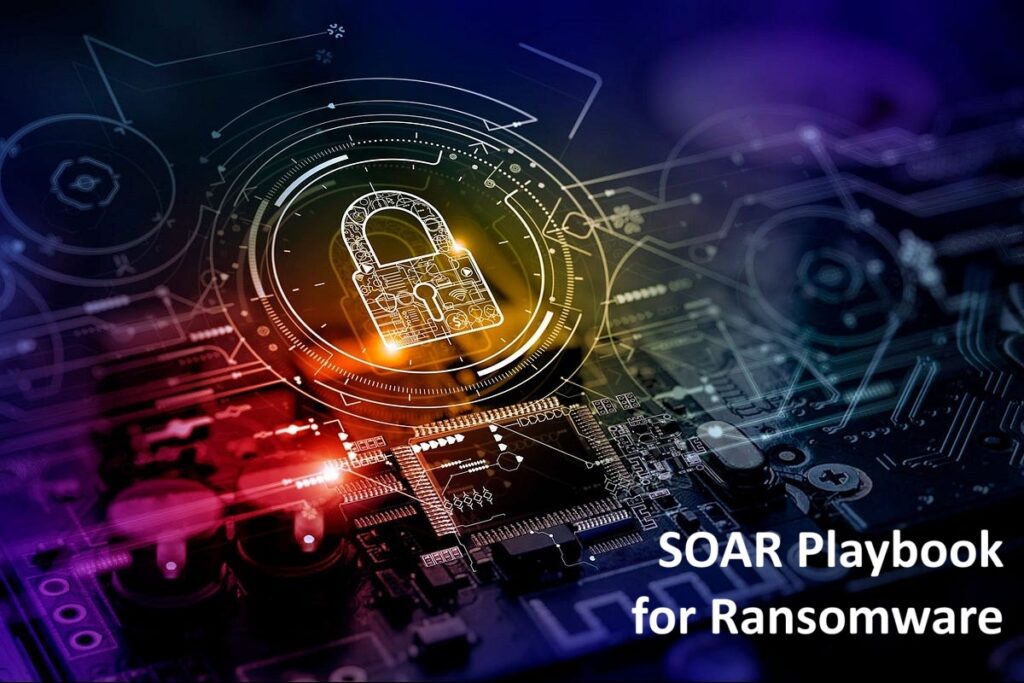
Status: Final Blueprint
Author: Shahab Al Yamin Chawdhury
Organization: Principal Architect & Consultant Group
Research Date: March 15, 2025
Location: Dhaka, Bangladesh
Version: 1.0
Table of Contents
- Executive Summary
- Understanding the Ransomware Threat Landscape
- SOAR Fundamentals and Principles for Ransomware Defense
- Strategic Design and Architecture of the SOAR Playbook
- Operationalizing SOAR for Ransomware Response
- Governance, Management, and Compliance
- Performance, Maturity, and Continuous Improvement
- Financial and Business Considerations
- Human Capital and Organizational Readiness
- Frameworks, Models, and Body of Knowledge
- Conclusion and Future Outlook
1. Executive Summary
This “SOAR Playbook for Ransomware” offers a comprehensive blueprint for leveraging Security Orchestration, Automation, and Response (SOAR) to defend against, respond to, and recover from ransomware. It aims to significantly reduce Mean Time To Respond (MTTR) and Mean Time To Contain (MTTC), boost operational efficiency, and deliver substantial cost savings by minimizing business disruption and data loss. SOAR is presented as a strategic enabler of business continuity, requiring investment in proactive defense, rapid containment, and efficient recovery.
2. Understanding the Ransomware Threat Landscape
Ransomware has evolved into a sophisticated, multi-billion-dollar industry, employing “double” and “triple” extortion, RaaS models, and LOLBins. Attacks are now targeted, persistent, involving reconnaissance, privilege escalation, and persistence before encryption. Effective defense requires identifying and protecting “Crown Jewels” data through segmentation, immutable backups, and Zero Trust. The impact includes direct costs, operational disruption, reputational damage, and regulatory fines. Industry-specific challenges (healthcare, finance, OT/ICS) necessitate tailored SOAR playbooks.
3. SOAR Fundamentals and Principles for Ransomware Defense
SOAR improves security operations via:
- Orchestration: Connecting and coordinating disparate security tools (SIEM, EDR, firewalls, IAM, threat intelligence).
- Automation: Executing repetitive tasks via pre-defined “playbooks” to accelerate response.
- Response: Standardizing incident handling for consistent resolution.
Key principles for adoption include human augmentation (not replacement), standardization, seamless integration across the security ecosystem, contextualization with threat intelligence, and continuous improvement. Platform selection considers integration, scalability, ease of playbook creation, TCO, and vendor support. Technical requirements involve robust infrastructure, API compatibility, efficient data ingestion, and securing the SOAR platform itself.
4. Strategic Design and Architecture of the SOAR Playbook
The playbook employs a modular, layered structure:
- Foundational Elements: Asset inventory, threat intelligence, segmentation, immutable backups.
- Core Response Playbooks: For initial access, lateral movement, data exfiltration.
- Specialized Recovery Playbooks: Forensic data collection, system restoration.
SOAR response is tiered:
- Tier 1 (Automated Triage & Containment): Immediate, high-confidence automated actions (e.g., blocking IPs, isolating endpoints) to reduce MTTC.
- Tier 2 (Human-Augmented Analysis & Remediation): Analysts investigate with SOAR-enriched context for nuanced decisions (e.g., forensics, eradication).
- Tier 3 (Strategic Response & Recovery): Orchestrates broader organizational response (e.g., data restoration, communication).
Effective integration relies on robust telemetry (logs, alerts) and comprehensive observability (real-time dashboards). Enterprise-grade matrices (Integration Completeness, Playbook Coverage, Automation Rate, MTTR/MTTC) track effectiveness. SOAR architectures can be centralized, distributed, on-premise, cloud-native, or hybrid.
5. Operationalizing SOAR for Ransomware Response
Operationalization involves systematic lifecycle management:
- Design & Development: Defining scope, mapping workflows, scripting actions.
- Testing & Validation: Rigorous testing in sandbox environments.
- Deployment & Activation: Controlled rollout, often starting with “monitor-only.”
- Monitoring & Optimization: Continuous performance tracking and refinement.
- Archiving & Version Control: Managing iterations and audit trails.
Best practices include modularity, robust error handling, comprehensive logging, human-in-the-loop design, and clear documentation. Playbooks orchestrate detection, enrichment, triage, containment, eradication, recovery, and post-incident analysis. Automated tactics include network segmentation, endpoint isolation, blocking malicious IOCs, account disablement, and triggering immutable backup restoration.
6. Governance, Management, and Compliance
Robust governance includes a SOAR Steering Committee, defined roles (RACI matrix), and regular reviews. SOAR aids compliance with regulations (GDPR, HIPAA) and frameworks (NIST CSF, MITRE ATT&CK) by standardizing processes, automating data collection, and maintaining detailed audit trails. Quality assurance necessitates regular testing and strict change management.
7. Performance, Maturity, and Continuous Improvement
Key Performance Indicators (KPIs) like MTTR, MTTC, Automation Rate, and False Positive Reduction are vital. A SOAR maturity model (Initial to Optimizing) provides a roadmap for improvement, directly correlating with ransomware resilience. Roadmaps involve phased approaches, and continuous improvement is driven by gap analysis, feedback loops, and threat intelligence. Agility in adapting to new TTPs requires flexible playbook design and rapid development cycles.
8. Financial and Business Considerations
SOAR involves TCO (licensing, infrastructure, staffing, training) but offers significant ROI through avoided costs: reduced incident response, avoided downtime, lower data breach fines, avoided ransom payments, and preserved reputation. The cost of a single major ransomware incident often outweighs the multi-year TCO. Effective support and maintenance strategies (internal vs. MSSP) are crucial for reliability.
9. Human Capital and Organizational Readiness
SOAR success depends on skilled human capital. Key skills include security operations expertise, automation/scripting (Python, PowerShell), orchestration logic, problem-solving, and communication. Comprehensive training programs for SOC analysts, SOAR engineers, and cross-functional teams are essential. Challenges include skill gaps, change management resistance, integration complexity, playbook development overhead, and lack of executive buy-in. Certifications (GCIH, GCFA) and continuous professional development are vital.
10. Frameworks, Models, and Body of Knowledge
Cybersecurity frameworks like NIST CSF (Detect, Respond) and MITRE ATT&CK (mapping TTPs) provide structured approaches. SOAR supports pillars like threat intelligence management, vulnerability management, and security operations automation. A clear taxonomy of ransomware incidents and tailored playbooks for specific families (e.g., LockBit) enable optimized responses. A comprehensive body of knowledge includes reference architectures, playbook templates, integration guides, and lessons learned databases.
11. Conclusion and Future Outlook
The “SOAR Playbook for Ransomware” enhances resilience against escalating ransomware threats through accelerated response, reduced risk, enhanced efficiency, improved compliance, and strategic business continuity. Recommendations include starting small, prioritizing human capital, robust integrations, continuous improvement, and alignment with business objectives. Future trends involve deeper AI/ML integration for predictive analytics and autonomous response, convergence with XDR, increased cloud-native adoption, sophisticated automated remediation, and focus on OT/IoT security, paving the way for hyper-automated, self-defending enterprises.
Chat for Professional Consultancy Services
